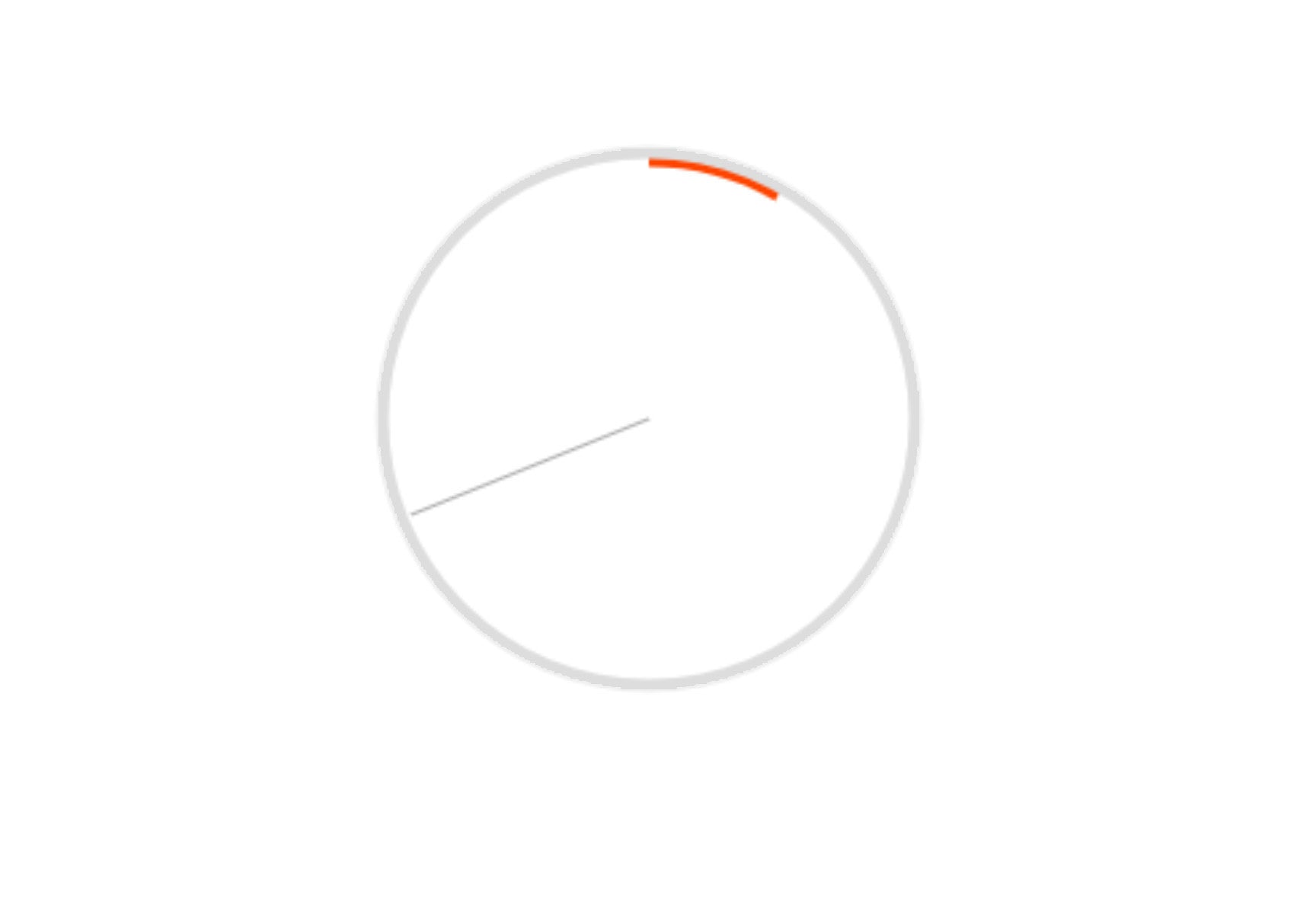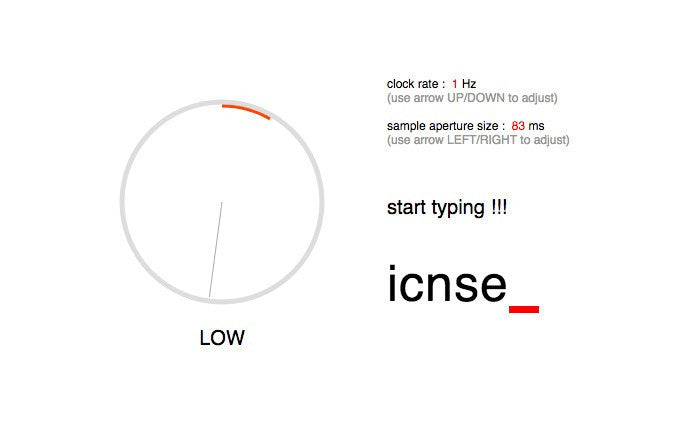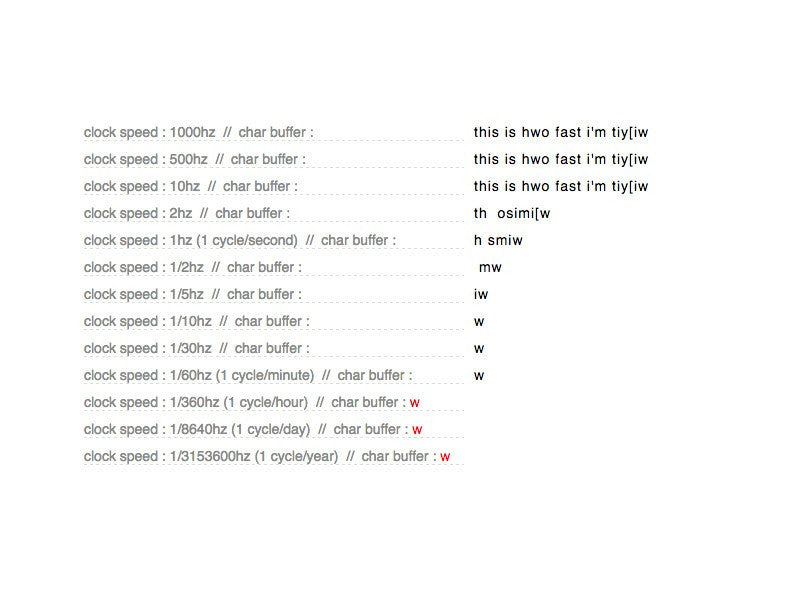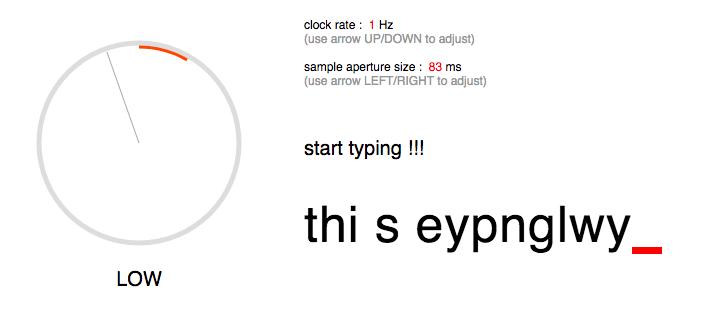
2 Experiments with Timing and Computers





Timing is integral to communication. When a signal is transmitted between two discrete systems, whether it is between components of computer hardware or individuals talking, timing sets up a context that makes a signal relevant and possible to understand.
A computer clock rate works at a speed of around 2.4GHz or 2.4 billion cycles per second (2010). This is great for background machine processing, but it is much faster than a person can perceive, let alone type. Here are two web experiments modelling a relationship between timing and computers.

Experiment 1 : variable clock rate typing [ built here in javascript by cw&t ]
In this experiment, clock rate is modelled in order to understand its relationship to how people interface computers, specifically when using the keyboard. Keyboard input is only registered during the period of time when the clock signal is HIGH (pictured in the red portion of the cycle).
Type a message to see what happens. Adjust the clock rate and the sample aperture size to adjust the effect. [ click here to try ! ]

Experiment 2 : 1000Hz to 1/3153600Hz typing [ built here in javascript by cw&t ]
This experiment models the relationship between clock rate and typing. The faster the clock rate, the more likely your input will be registered and appear on the screen.
When the clock rate is slowed down, a user may type faster than the clock resulting in the loss of the keyborad signal, a greater chance of transmission error.
>As you type, your input is held in the “char buffer” (pictured in red) until its respective clock cycle bit turns to high.
Notice your message degrade as clock speed varies from 1000Hz (1000 cycles per second) to 1/3153600Hz (1 cycle per year). [ click here to try ! ]